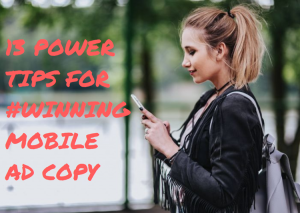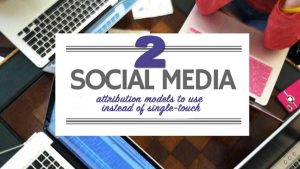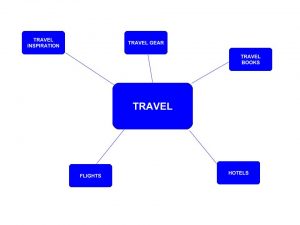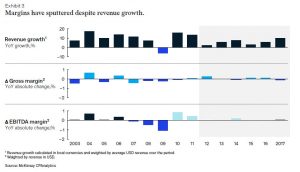
In the digital age, your website is a storefront to which the traditional brick-and-mortar just can’t compare. Now, it’s becoming easier and easier to reach new audiences in distant places, may it be across the United States or even abroad. As you connect with these vastly different people, who have different tastes but a shared interest, you need to make sure your website is enabling as many potential customers as possible to make a purchase. Your website, like a storefront, need to be compelling, detailed, and yet simple and intriguing. Ultimately, it needs to make the buyer comfortable and confident – the perfect precursor to a long-time, loyal customer-business relationship.
To start, you need to make sure your website is answering the very basic questions your customer is asking. These answers can be represented in several different forms, some written and some graphical. We’ve compiled our top 10 questions your website should answer, and slumped them into 3 sections: The Critical, About Your Product, and About Your Service.
Whip out your pen and paper and see if you can answer this short list:
The Critical
1. Who are you and What is your product?
This is arguably the most important thing you need to make sure your website is answer. What is your product! If this isn’t immediately clear, visitors are likely going to bounce off your page right away. A confused, poorly organized website with no clear or coherent product offering just isn’t fun to look at. You need to clear state who you are, what you do, and what your product is.
Here’s how:
- Logo: Prominently display your business name/logo somewhere on the site.
- Product: This is a two-fold strategy. First, you’ll probably need to use text to explain this, such as, “This product delivers these types of products.” Second, you should tell this story with imagery. Have beautiful, bold and attractive photos of your product in real life front and center.
- Remind visitors throughout their journey. Create multiple call to action on different pages and feature your product, in some form, as often as possible.
2. Why should I care?
So your visitors now know what it is you do. Why should they care?
This is where your value propositions come into play. These are the selling points behind your products; they’re the real reason why your customers are making that purchase and subscribing to your business. This appeal to people rationally and emotionally. That is, you should pitch your product in a way that both inspires a need and want by customers. Write down the best reasons someone who purchase your product. Is that told on your website?
Here’s how:
- This can be embodied in a number of ways. First, it’s a good idea to list out the value propositions prominently, next to your product. These value propositions should also come to life with the images you’re using. For example, if you’re value proposition includes “7-9 paleo health snacks” be sure your product shot actually includes that number of items.
- Keep this in mind when writing all your website copy, like your FAQs, about, and other sections. Touching on how well you execute on your value proposition helps build confidence with the consumer. Make sure you’re fluent and well-spoken with what makes your business great.
3. How much is it?
Naturally, after someone is informed and interested, they’re going to ask the big question: What’s the cost?
Immediately, you need to think about price sensitivity, which describes the phenomenon of how the price of a product affects consumers’ purchasing behaviors. Essentially, you want to be clear on price while ensuring it also communicates comfortability. While this differ from product to product and from consumer to consumer, there are a couple thing you can do to answer this question in a way that will compel people to follow their with their checkout:
- Colors. Using the right colors on your checkout and product page can help people feel more confident (orange), trusting (blue), or peaceful and healthy (green). These emotions might just be what they need to get that feeling they needed to complete their purchase.
- Highlight special offers, discounts, or final value propositions. For example, throwing on a % off sticker/banner or “Free Bonus Gift” notice on the product page can help lend to justifying the purchase.
4. How can I buy your product?
If your visitors love your product idea and think the price is a steal, then cannot find the checkout button, you’re going to have serious problems. This should be simply enough, but if you’re looking at your website with “old eyes” you might think your page is obvious. Have someone test your checkout while keeping the question mind. Ideally, your checkout buttons should be bold, attractive, and feature text with a strong call to action such as “Subscribe Today!” or “Start your Journey!” or whatever else might be most poignant to your niche.
About the Product
5. What can I Expect?
Expectations are everything when it comes to satisfaction. If someone is underwhelmed, they become unsatisfied are likely to cancel. If they’re satisfied, they’ll probably keep going and potentially become very loyal. If they’re blown away, they’re more probably to stay on, and will probably talk it up to their friends and family while becoming very loyal.
The goal with expectations is to be romantic but realistic. Accurately describe the basic product offering in a beautiful way, and leave room for yourself to exceed expectations. For example, when naming product ranges, give yourself 3-4 products worth of wiggle room. 6-9, for example, allows you to satisfy people with 6-7 but really blow people away with 9 or 10. Similarly, if you procure amazing 7 items, you’re able to hit the lower range while remaining in the zone of expectations.
Here’s how:
- Accurately and concisely describe what’s included with words and images
- Detail ship time, delivery time, and other details of the final experience
- Provide an average of retail value, if that is important to your subscribers
- Use images to show the emotion people can expect – a smiling shot of someone enjoying your box is a real plus.
6. What do other people think?
Word of mouth referrals is one of the most powerful customer acquisition methods, and people will often wonder, “What have people’s experience’s been?” You can replicate this phenomenon on your website by prominently displaying customer reviews, and maybe using social network styled images to help them feel authentic and written by real people (they should be!). For example, under your product offering, consider showing 3-4 reviews by other customer, profiling a picture and quote.
7. When would I receive it?
Subscription services are still quite novel to most people, and while some ship immediately, others ship just once a month. Because of this, be sure the shipping details around your product are super clear. This can be shown in checkout, on the product page, and should be listed in your help section or FAQs. This should cover things like ship date, time in transit, carrier, and delivery notes or suggestions, like if you need someone to sign for cold or perishable products.
About the Service
8. How do I contact you?
This is definitely a question everyone will look for, and when it comes to internet savvy shoppers, the ease of contacting a company is a big plus. The takeaway: make contacting you simple and straightforward! Don’t bury your contact form at the bottom of the page or on some distant page. Instead, consider integrating a help widget that scrolls with the user. Have a chat box ready and available, perhaps even prompting people for discussion (this has been shown to increase conversion a ton!).
9. How do I cancel?
It’s a fact: most people will want to know how to cancel the subscription. What’s more, they’ll want to feel like it’s hassle free and easy to do so. They don’t want to have to fill out form or submit a survey just to get a request in the hands of an agent. Make your cancellation policy simple and clear, and avoid locking people into extended contract or multi-month commitments with no wiggle room. Making it easy is one of the best way to keep people satisfied, and coming back if they cancelled for something beyond you (like finances or moving).
10. What are your credentials?
This plays a lot into trust, and for some niches, this goes a long way. If you’re positioning your business as the best source for a certain type of curation, product quality, or other parameter, you’ll likely need to list out some qualifications that will impress your visitors and drive home the feeling of authenticity. This can be done easily and quickly with a short about page, perhaps featuring your team members, their interest, and their background. This doesn’t need to be exhaustive, and in some case, your businesses might not really need this. Generally though, having a heart-warming story behind your business helps people feel compassion and that your brand is human.
How Does Your Website Stack Up?
Review these questions your website needs to answer, sit back, and ask yourself everything stacks up. Is your product clear? Do your value propositions tell the whole story? Are those simple, yet critical customer services questions answers in beautiful ways? How about the nitty gritty stuff, like contacting you and canceling?
By doing a short, yet comprehensive review on your website and making sure these elements are addressed, you can begin positioning yourself for a high converting website that encourages long-lasting, loyal customer relationships. Now get out there and start updating!
(186)
Report Post




